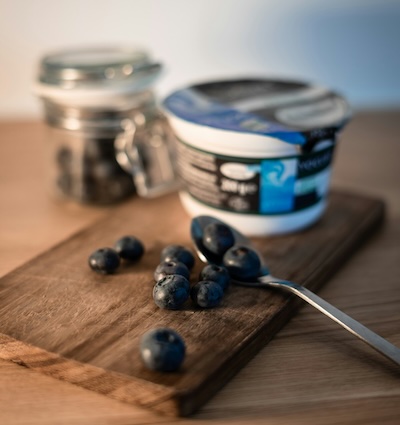
Ultra-processed foods (UPFs) are having more than a moment now. Everyone has heard about them, they’re part of everyday conversation, and about 99% of what you hear about them is negative.
But could you define UPFs? Right now, there are lots of different definitions, but no consensus definition, although the U.S. government is trying to develop one. The assumption, however, is that UPFs are basically “bad-for-you” foods. This just adds to the confusion, and when people are confused about a food, their default response is to avoid it.
There are many profiling systems that define UPFs, with the most common being the NOVA system. It classifies foods into four categories:
- Minimally processed foods: foods like milk, meat, fresh produce, and other foods with no added fats, salt, or sugar.
- Processed culinary ingredients: Here’s where you find salt, sugar, flour, extra virgin olive oil, spices, and herbs because they’ve had some processing through grinding, pressing, etc., in order to be usable.
- Processed foods: Think plain canned beans, cheese, and freshly baked bread from a bakery, even if made from refined flour.
- Ultra-processed foods: Industrially created foods and food products that may include foods from Group 2 but also have additional additives or ingredients not typically found in a home kitchen, usually added to improve the shelf-life of a food. Some examples: supermarket breads that have stabilizers, canned foods that have a preservative (even a naturally derived preservative), and also stabilizers such as lecithin or carrageenan.
 This last category is the one that really irks me. It’s too broad! It will put a food like blueberry Greek yogurt in the same category as marshmallows and gummy candy – just because the yogurt has a tiny amount of potassium sorbate added so that it will last longer in the fridge without developing mold. (Potassium sorbate is derived from sorbic acid, which is safe and even found naturally).
This last category is the one that really irks me. It’s too broad! It will put a food like blueberry Greek yogurt in the same category as marshmallows and gummy candy – just because the yogurt has a tiny amount of potassium sorbate added so that it will last longer in the fridge without developing mold. (Potassium sorbate is derived from sorbic acid, which is safe and even found naturally).
Other healthful foods that are UPFs: Add to that UPF category a can of garbanzo (or any other) beans, because they might have a preservative like EDTA to help the product last longer in the pantry without exploding, the way many home-canned foods did back in the day.
Speaking of beans, hummus is a UPF also, even if it doesn’t have a stabilizer, because it could have added sugar – although sugar is also a “processed culinary ingredient” typically found in most home kitchens.
Why All The Confusion about Processed Foods?
A food PROCESSING index, including NOVA, is not – repeat, not – a NUTRITION index! Yet so often in the media, the two are equated. Epic failure.
One ingredient that automatically makes a food a UPF under the NOVA system: monosodium glutamate, good old MSG. Any food with MSG is classified as a UPF, even if you made the dish yourself. This makes no sense for multiple reasons:
- MSG is a culinary ingredient, used for over 100 years in home kitchens around the world, including those in Asia and South America. Ironically, the NOVA system was developed in Brazil, South America. Was the NOVA development team not aware that home cooks use MSG?
- MSG’s two components, sodium and glutamate, are naturally found in food and in our own bodies. Sodium is an electrolyte we need, and glutamate is a “non-essential” amino acid, one of the building blocks of protein. It’s “non-essential” because our bodies already make our own glutamate every day, and far more than you’d ever be able to get by adding MSG to your food. Glutamate is in all protein foods, whether they’re from plants or animals. Tofu, Greek yogurt, eggs, salmon, and meat all have glutamate.
- Adding MSG to a food can actually help REDUCE the total sodium in that food. More on that below.
Factoid about glutamate: it’s the most prevalent amino acid in your gut and has a vital role in our immune systems.
 Should consumers think of UPFs as “bad foods”? While some of them, like candy, provide empty calories, others, like Greek yogurt, canned beans, and tofu, are really good foods with many nutritional benefits.
Should consumers think of UPFs as “bad foods”? While some of them, like candy, provide empty calories, others, like Greek yogurt, canned beans, and tofu, are really good foods with many nutritional benefits.
This is the weak link in these systems. They classify foods based on ingredients, not nutritional quality. This study showed why a food processing system like NOVA isn’t a proxy for a nutrient index. The study developed:
- A diet composed of over 90% UPFs (based on the NOVA system) and included foods familiar to most U.S. consumers.
- A 7-day diet aligned with recommendations by the 2020 Dietary Guidelines for Americans for a healthy dietary pattern.
- The diet was analyzed for diet quality, based on the 2015 Healthy Eating Index (HEI).
Here’s what the researchers found, after analyzing the UPF diet:
- The average HEI score of Americans’ diets is 56, on a scale of 100.
- The UPF diet scored a whopping 86 – e.g., it was higher quality and more balanced than the typical American diet.
The UPF diet had adequate levels of all macronutrients and micronutrients, but couldn’t quite score a perfect 100, due to being a tad low in magnesium, vitamins D and E, choline and whole grains, and had excessive sodium.
Want to Reduce Sodium? Use MSG!
As the researchers found, some UPFs contain too much sodium, but this is where MSG can be a tool for REDUCING sodium. MSG has sodium – it’s monosodium glutamate, after all. But gram for gram, it contains 62% less sodium than regular salt. Best part: it enhances the taste of food better than salt. How? It increases umami, the fifth taste (sweet, salty, sour, and bitter are the others), which intensifies the flavor of foods, but does so with less sodium. It’s a win-win.
MSG can’t totally replace salt in foods, but I like a 1:1 combination. That’ll still cut the added sodium by 28%, and improve flavor!
Want to go deeper into MSG facts? Check out this article on why “no MSG” really means, “No Mistake, Safe & Good”!

